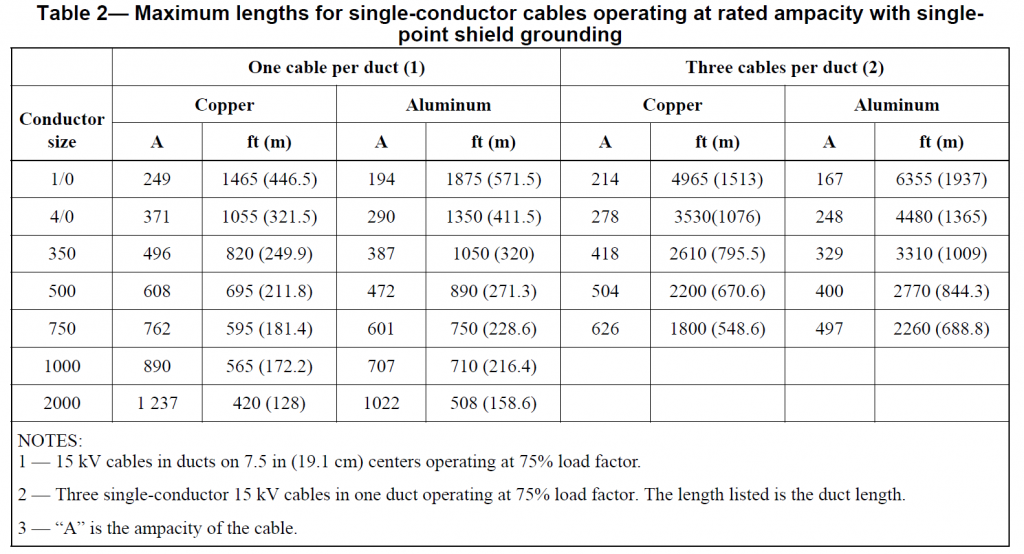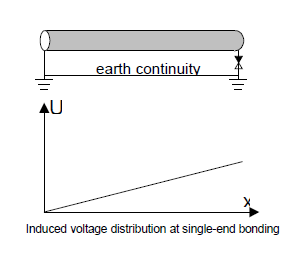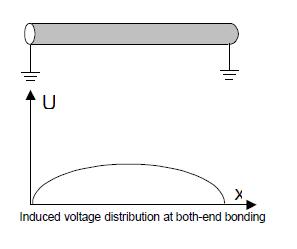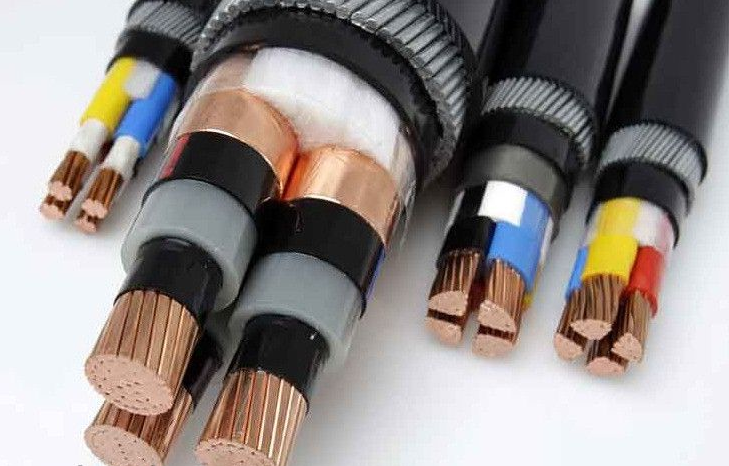Cable shields and the metallic sheaths or armors need to be solidly grounded on at least one point in order to operate at or near ground potential at all times. Removal of the shield ground, either intentionally or accidentally, can disturb the voltage distribution in the cable insulation, which can lead to a cable failure due to insulation breakdown. High voltage cables are particularly susceptible to this damage.
Grounding of cable shield or outer sheath at both ends can results in circulating currents that may require cable derating, depending on the cable length and construction. A table is provided by ANSI/IEEE 525 recommending the maximum lengths of single point shield grounding.

Short cable runs do not result in significant circulating currents, but for longer runs, single end grounding should be used. However, grounding at one end results in standing voltages which, unless fully insulated from external access, need to be limited, and the safe limit for accessible sheaths is 25 V between the sheath and the local ground.
Single-ended Bonding
 Only one end of the cable sheath is connected to the system ground, at the other end ("open end"), standing voltage appears which is induced linearly along the cable length. To ensure safety, the "open end" of the cable sheath has to be protected with a surge arrester. The surge arrester (sheath voltage limiter) is designed to deflect switching and atmospheric surges but must not trigger in case of a short-circuit.
Only one end of the cable sheath is connected to the system ground, at the other end ("open end"), standing voltage appears which is induced linearly along the cable length. To ensure safety, the "open end" of the cable sheath has to be protected with a surge arrester. The surge arrester (sheath voltage limiter) is designed to deflect switching and atmospheric surges but must not trigger in case of a short-circuit.
Both-end bonding
 Both ends of the cable sheath are connected to the system ground. With this method no standing voltages occur at the cable ends, which makes it the most secure regarding safety aspects. The downside, circulating currents may flow in the sheath as the loop between the two earthing points is closed through the ground. These circulating currents are proportional to the conductor currents and therefore reduce the cable ampacity significantly making it the most disadvantageous method regarding economic aspects.
Both ends of the cable sheath are connected to the system ground. With this method no standing voltages occur at the cable ends, which makes it the most secure regarding safety aspects. The downside, circulating currents may flow in the sheath as the loop between the two earthing points is closed through the ground. These circulating currents are proportional to the conductor currents and therefore reduce the cable ampacity significantly making it the most disadvantageous method regarding economic aspects.
Circulating ground currents create electrical noise which can cause interference to electronic controls and equipment.
Whatever method used in grounding cable shields and metallic sheath, careful considerations as to the impact of the method is a necessary design consideration.
References:
- ANSI/IEEE Std 525
- Industrial power systems / Shoaib Khan, Sheeba Khan, Ghariani Ahmed, CRC Press ISBN-13: 978-0-8247-2443-6
- Brugg Cables - High Voltage XLPE Cable Systems Techincal User Guide

Comments are closed.